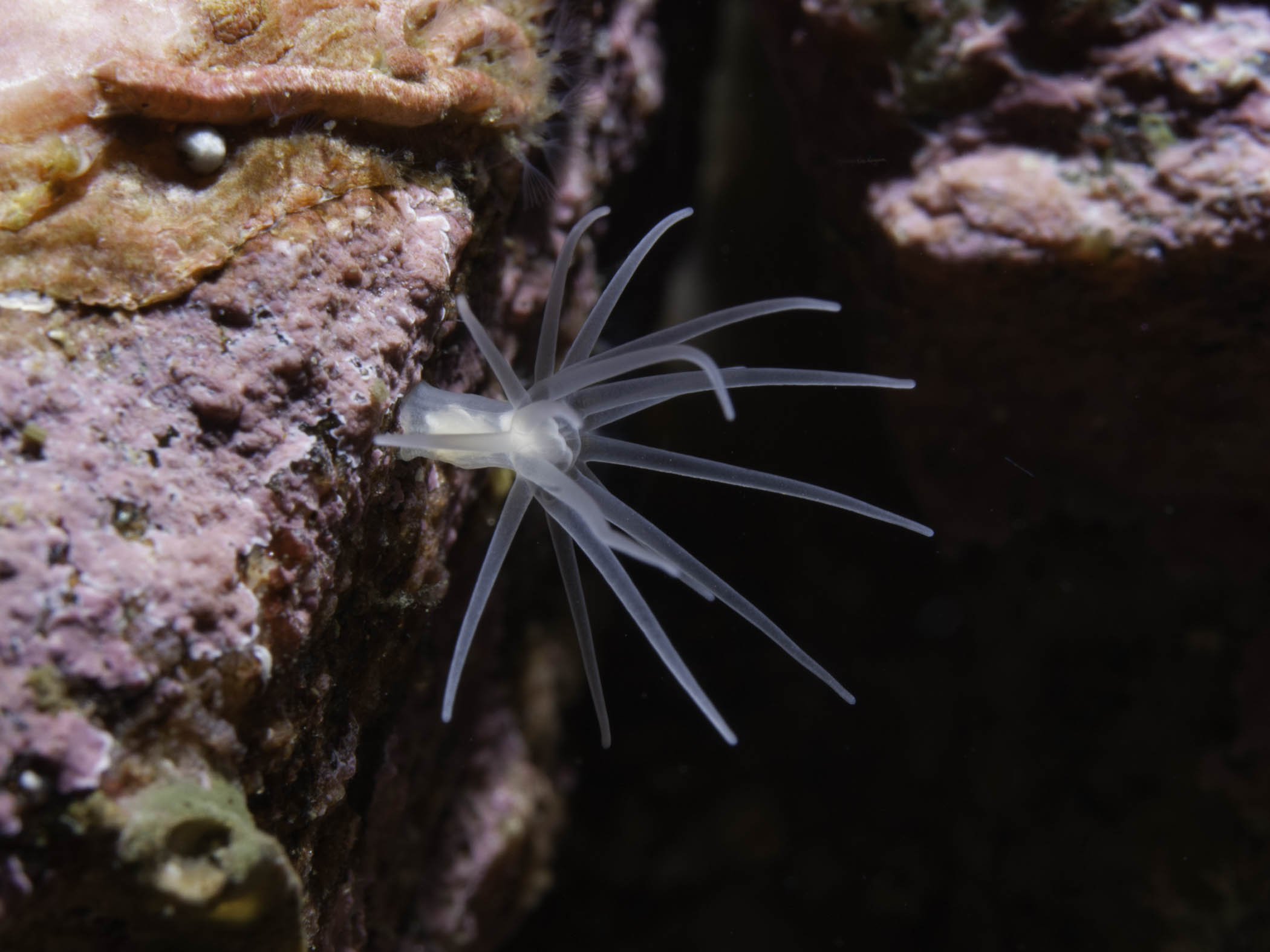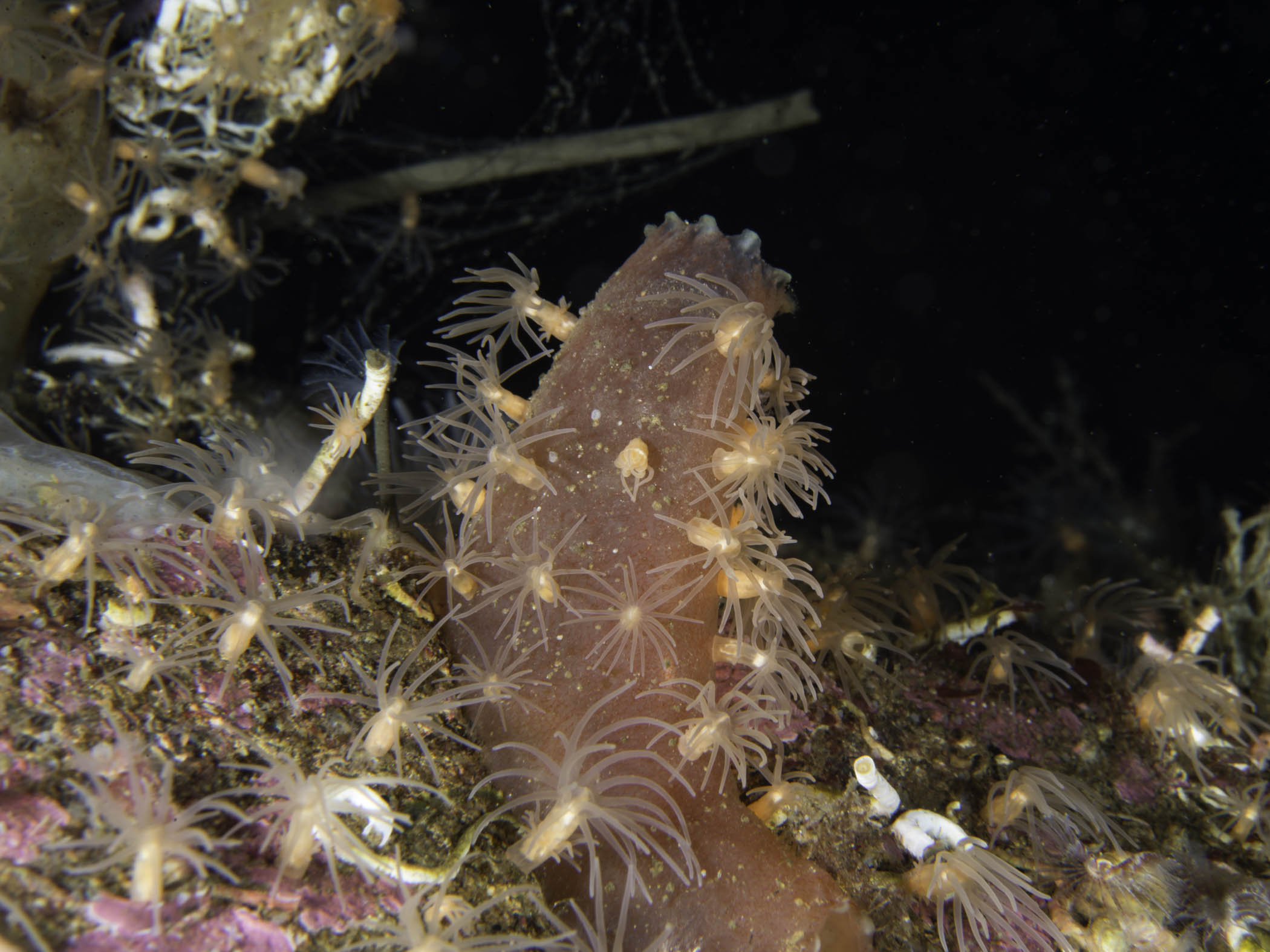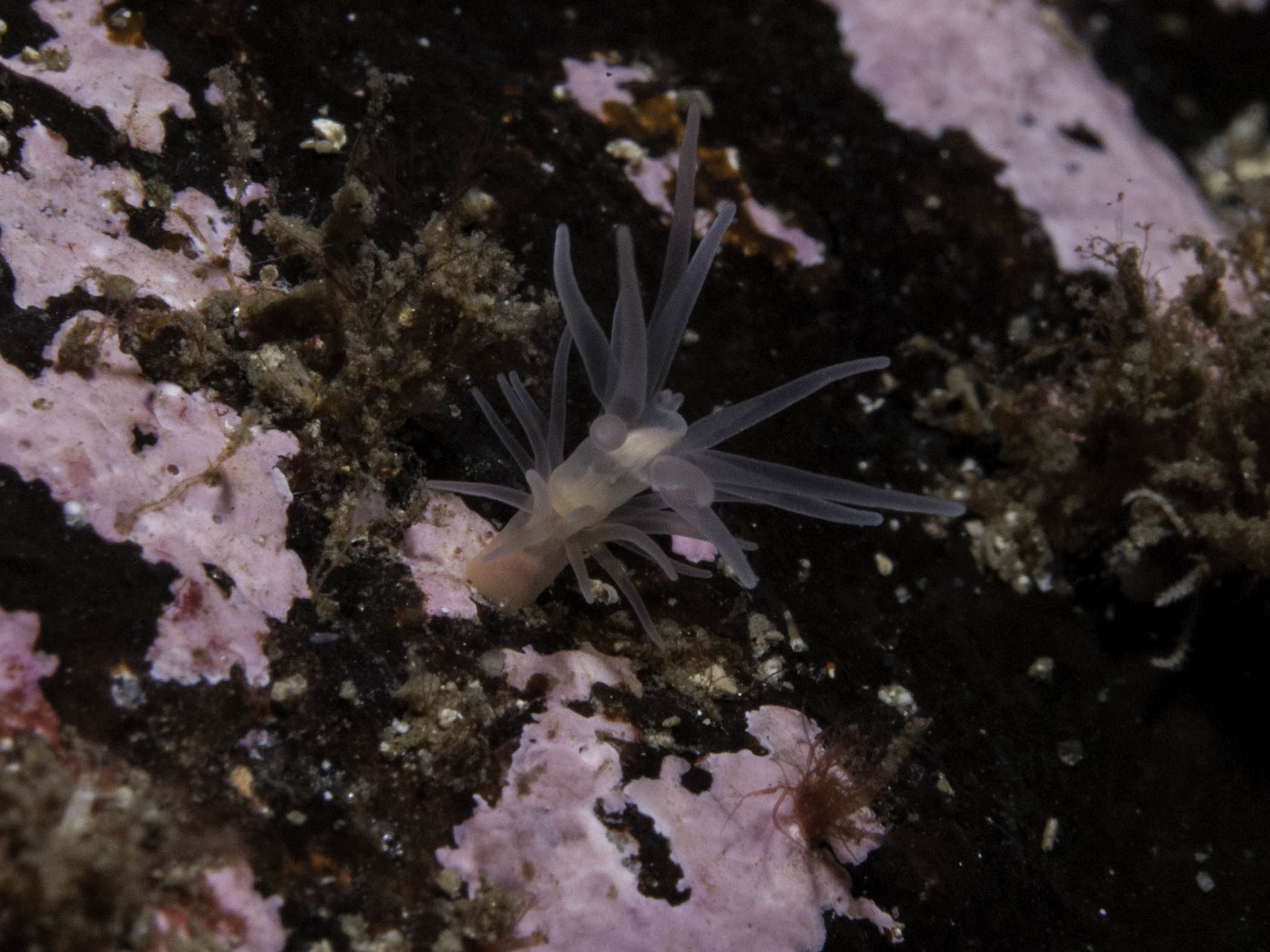| CNIDARIA : Actiniaria : Gonactiniidae | SEA ANEMONES AND HYDROIDS |
Gonactinia prolifera (Sars, 1835)
 |
| Gonactinia prolifera |
Description: A very tiny anemone, up to 5 mm tall including tentacles. Column slender, with slightly flattened, adherent base. About 16 large (bulky) non-retractile tentacles. Colour whitish or pink, very translucent. Like Protanthea simplex, it is a very active species. It can swim by thrashing its tentacles or by 'looping' on the substrate, alternately using base and tentacles. It reproduces by transverse division, sometimes chains of up to three anemones which have not separated are found.
Habitat: On sea-weeds, worm-tubes, sea-squirts, etc. from 0-100 m depth.
Distribution: Rarely reported due to its small size. Old records from west Scotland and south Cornwall around 1900, and recently from Plymouth, Northern Ireland and Lough Hyne. It is common in some parts of Scandinavia and it has also been recorded from the Mediterranean.
Similar Species: Unlikely to be confused with any other anemones (except juvenile Protanthea simplex) but may resemble various naked hydroids. Hydroids however are colonial animals and are attached to a substrate. Hydroids do not possess a throat, which in Gonactinia can be seen through the transparent body wall.
Key Identification Features:
- Very small size.
- Non-retractile tentacles.
- Very active nature.
Distribution Map from NBN: Gonactinia prolifera at National Biodiversity Network mapping facility, data for UK.
iNaturalist: Gonactinia prolifera at iNaturalist World Species Observations database.
GBIF data for Gonactinia prolifera
WoRMS: Gonactinia prolifera at World Register of Marine Species. Accepted name: Gonactinia prolifera (Sars, 1835). AphiaID: 100912.
Classification: Biota; Animalia; Cnidaria; Anthozoa; Hexacorallia; Actiniaria; Enthemonae; Metridioidea; Gonactiniidae; Gonactinia
| Previous species | Next species |
| Picton, B.E. & Morrow, C.C. (2024). Gonactinia prolifera. (Sars, 1835). [In] Encyclopedia of Marine Life of Britain and Ireland. https://www2.habitas.org.uk/marbiop-ni/speciesaccounts.php?item=D11340. Accessed on 2025-04-10 |

